

Stagehands encounter fall hazards all the time. A common fall risk is loading tower truss sections onto flatbed trucks. Addressing this unique, yet common fall hazard is key to safety for all stagehands!
Is Fall Protection For Flatbed Trucks Necessary?
We are hard-wired to avoid falls. But sometimes workers scoff at using fall protection. Especially, at lower heights. Some people think 6 feet to the lower level is not bad at all. That mindset is severely disconnected from the sheer gravity of the situation. Fatalities can happen from falls of just 6 feet or less.
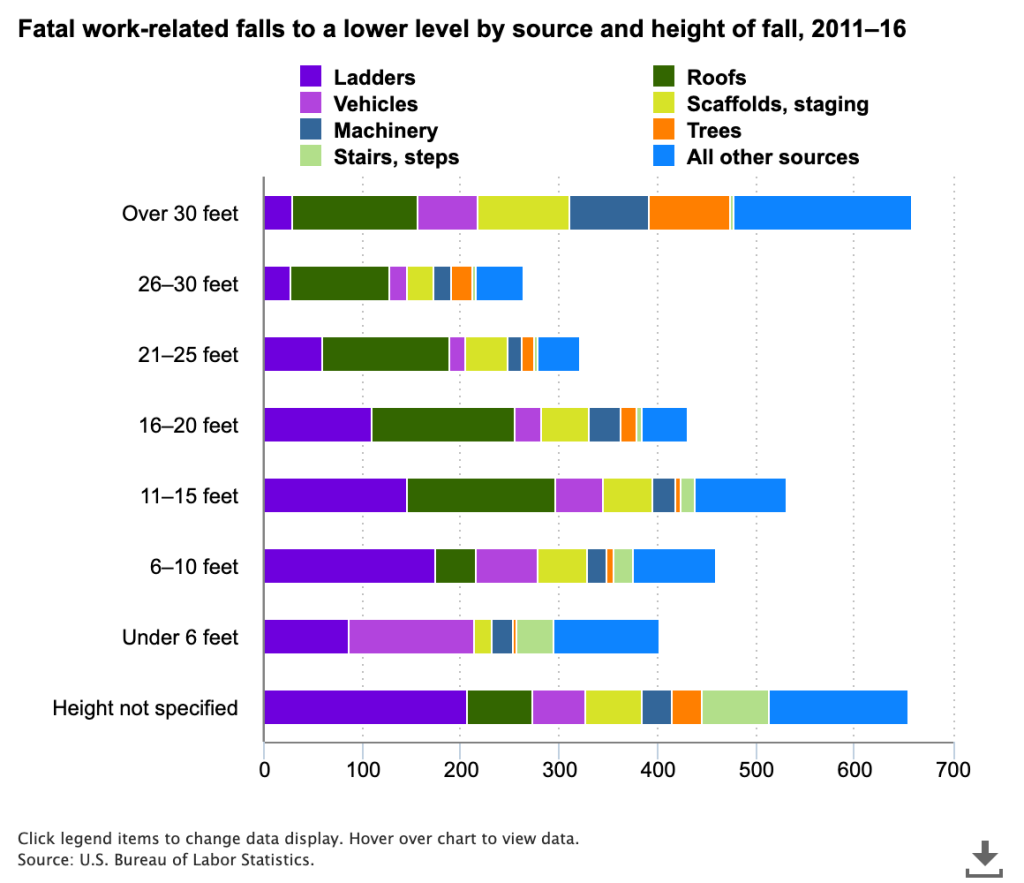
From 2011 to 2016, the U.S. Bureau of Labor Statistics (BLS) recorded:
- 3,723 fatal falls to a lower level
- 37.5% occurred from a height of 15 feet or less
- 17.6% of all fatal work-related falls happened from an unknown height!
Fall protection is important. Especially when loading tower truss sections onto flatbed trucks.
A Common Hazardous Scenario: Handling Tower Truss Sections On Flatbed Trucks

This is a common hazardous scenario: handling tower truss sections on flatbed trucks. The standard flatbed trailer sits roughly five feet high. From the picture, it seems that the workers are at least 6 feet above the floor. Each tower truss section adds more height for the workers.
But how do we do that task safely? Let’s consult the Hierarchy of Safety Controls.
Hierarchy of Safety Controls for Flatbed Trucks
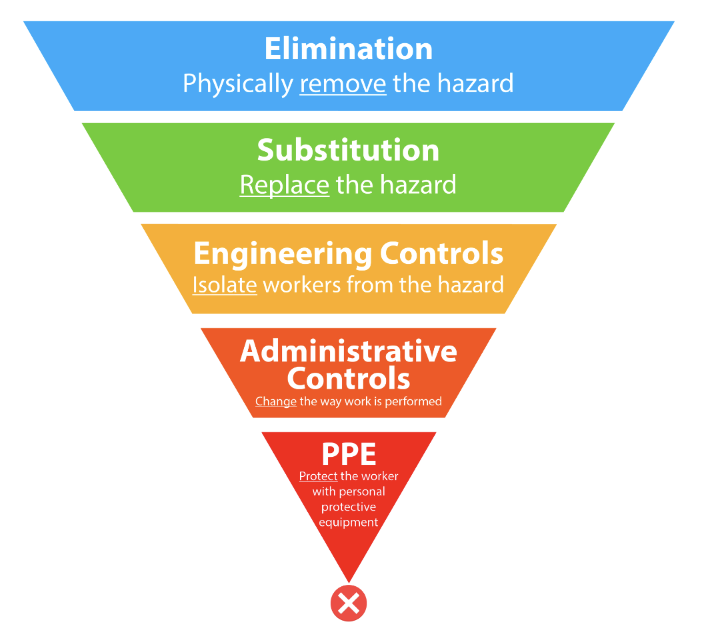
Hazard Elimination
We must first consider eliminating the fall hazard. Using a crane and extra long slings to put tower truss sections into place eliminates the need to climb onto the flatbed trucks. A task that can be done without putting a worker at risk of falling is the best work method.
Hazard Substitution
Workers can utilize ladders instead of climbing the tower truss sections. Ladders are a leading cause of fall injuries. So, it is a good idea to substitute them with boom lifts or scissor lifts. This is known as hazard substitution.
But what if boom lifts or scissor lifts are not available?
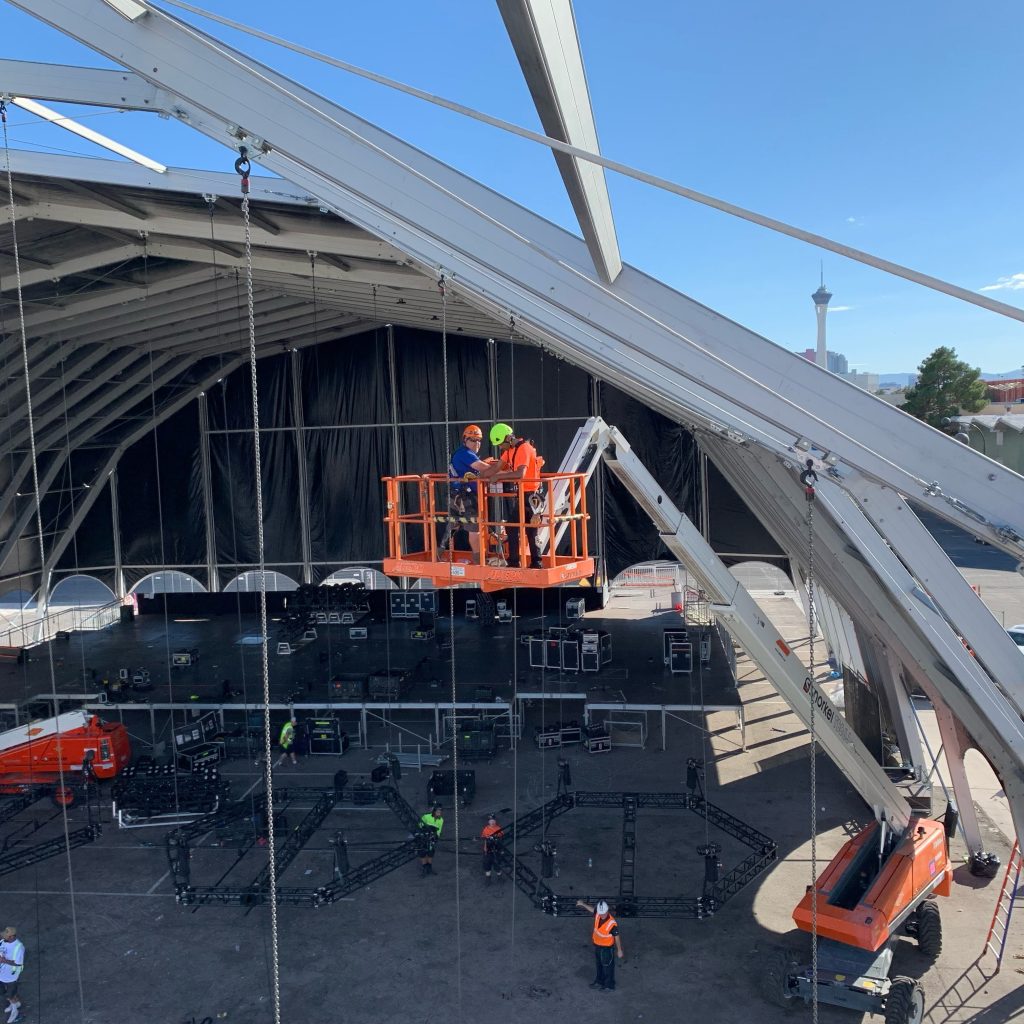
Engineering Controls
The next best method is to involve engineering controls. An engineered scaffolding structure that rolls into place is an example of mitigating a fall hazard with engineering controls. This is better than free climbing or using ladders.
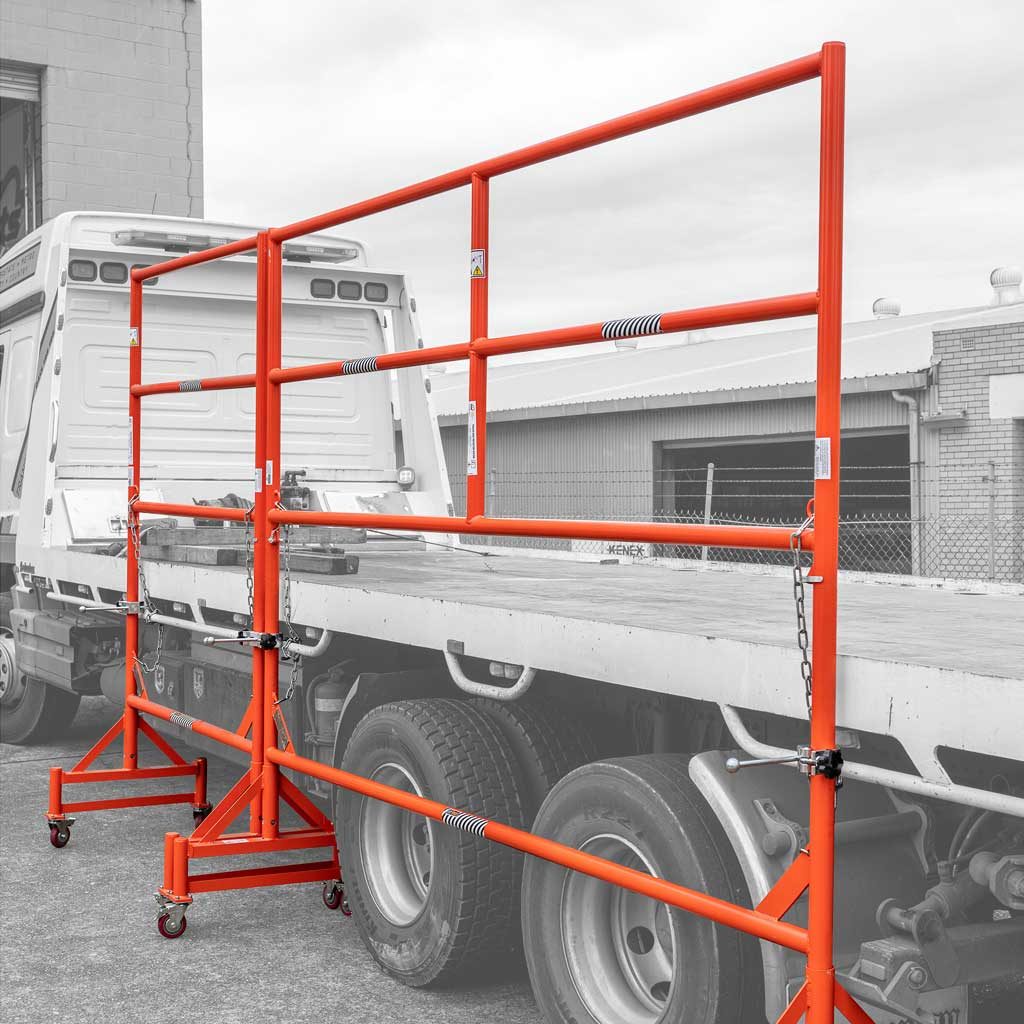
Another type of engineering control is guardrails along the edges of the truck. This is also known as passive fall protection. A passive fall protection system protects workers without requiring any action on their part. Unfortunately, this only works up until the point that the tower truss sections stack higher than the guardrail.
Administrative Controls
Next up, we must consider administrative controls. These mitigate hazards by changing the way people work. Clearly marking out the hazard zone is one example of administrative control. Employing safety supervisors to monitor workers and prevent unauthorized access in the hazard zone does help to increase overall safety. These controls work best with other and more effective controls.
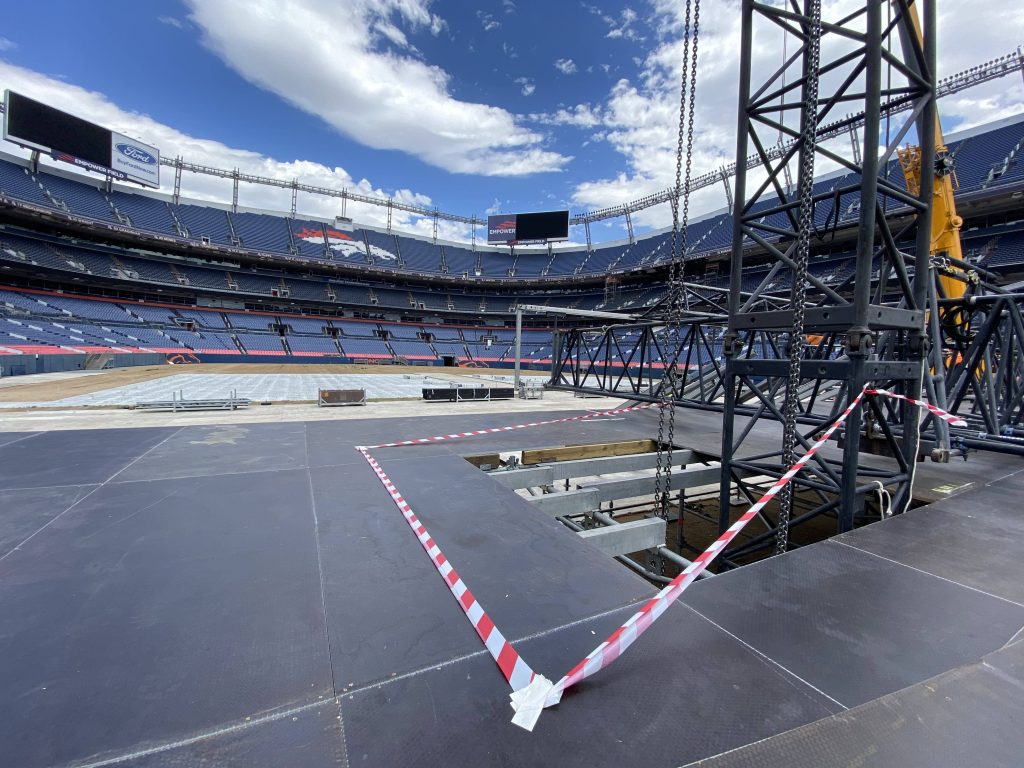
Personal Protective Equipment
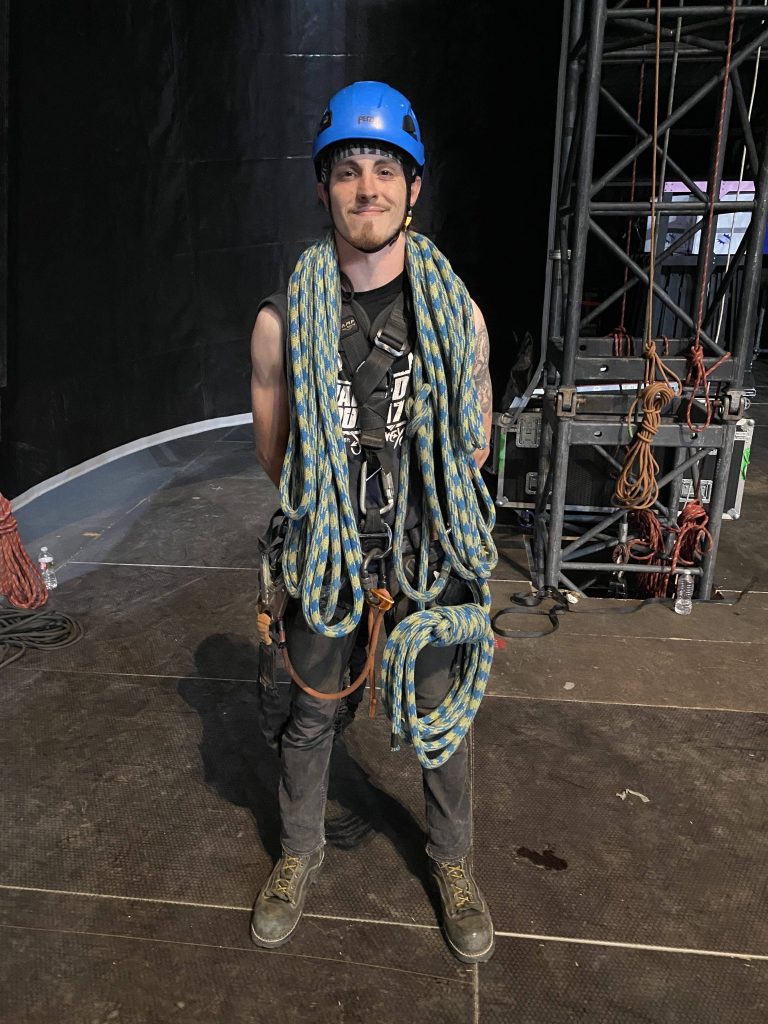
Then, we must consider Personal Protective Equipment (PPE). An example of this at Rhino Staging is when riggers wear ANSI z89.1 safety helmets and ANSI z359.11 harnesses. Fall protection gear that prevents the worker from reaching a leading edge is known as fall restraint.
Fall protection gear that allows the worker to free fall before catching their fall is known as fall arrest. Self-retracting lifelines (SRLs), energy-absorbing lanyards (a.k.a. Lanyards with “shock packs”), and horizontal lifelines (HLLs) are all examples of fall arrest gear.
If you cannot mitigate the hazard to a reasonable level, then do not do it!
Why Can Riggers Not Just Climb the Flatbed Trucks?
Even though PPE is a viable option, it is NOT a feasible solution for loading tower truss sections onto flatbed trucks. Number one, there is not enough fall clearance to adequately protect the worker. Fall clearance is the total required distance from the anchor to the ground.
Even with fall arrest devices that limit free fall, flatbed trucks do not have adequate anchorage. Anchorage is a secure point of attachment for fall protection equipment. They must be capable of supporting at least 5,000 pounds (22.2 kN) for each employee 1910.140(c)(13)(i).
Wait a minute. Concert roof systems can accommodate tens of thousands of pounds. Could riggers just clip to the tower truss that lays on the flatbed truck? NO!
The entire structure can accommodate lots of weight as a complete, engineered system. But the self-weight of each individual truss piece is far less than 1,000 pounds, let alone the 5,000 that we need for fall protection.
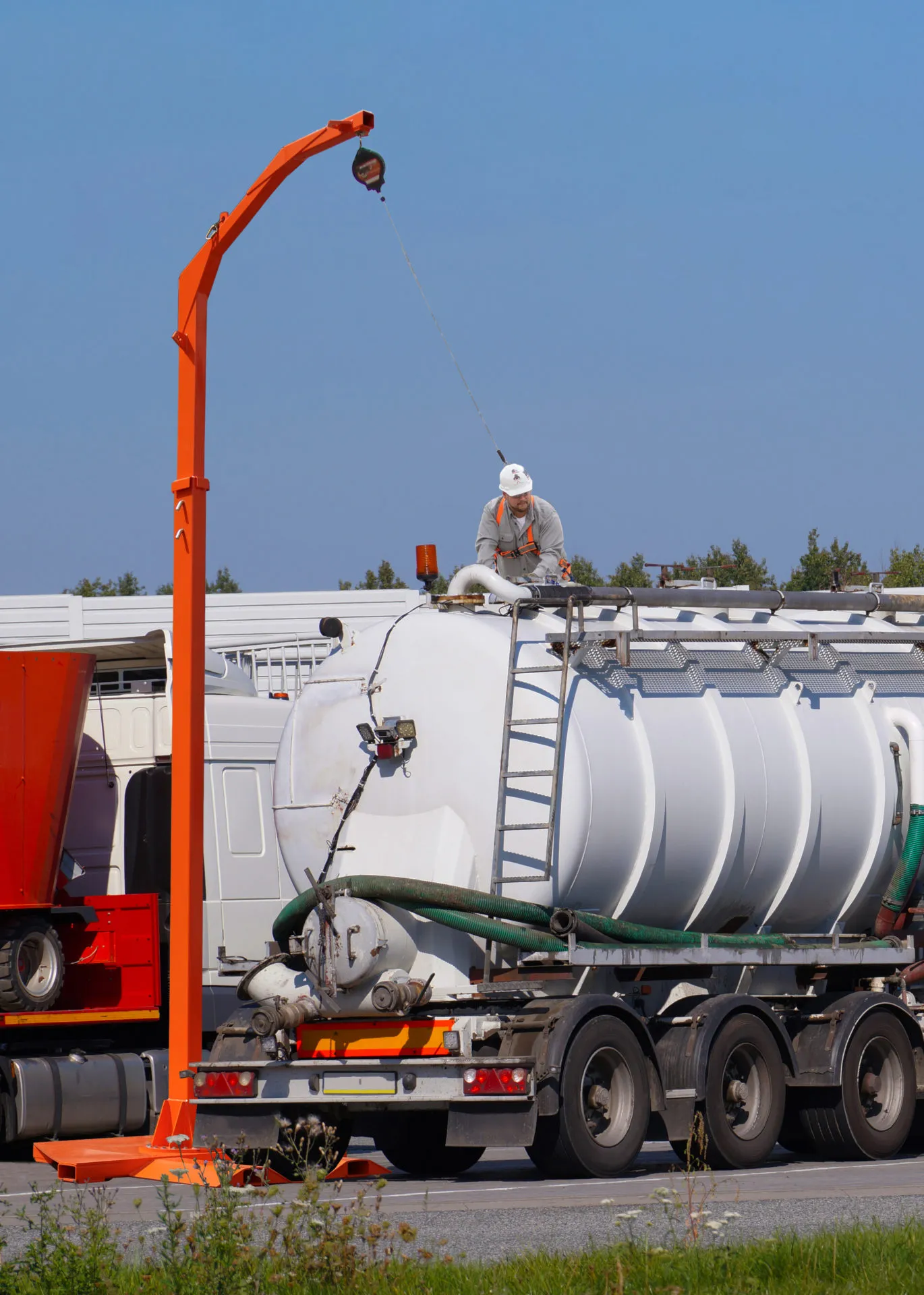
Fall arrest anchorage points must be separate from the tower truss sections and the flatbed truck. They also must be either:
- Capable of supporting at least 5,000 pounds (22.2 kN) for each employee attached, or
- Designed, installed, and used, under the supervision of a qualified person, as part of a complete personal fall protection system that maintains a safety factor of at least two 1910.140(c)(13).
An overhead and independent anchorage point for fall protection that meets OSHA regulations is better than clipping in the tower truss pieces lying on the flatbed truck. Davit arms and portable fall protection systems allow riggers to help strap tower truss to flatbed trucks.
Final Thoughts on Fall Protection for Flatbed Trucks
It can be easy to overlook and ignore fall hazards that occur rather close to the ground. No one questions the importance of fall protection when workers are 100 feet in the air. Yet, deaths often occur while working within 15 feet of the ground. Flatbed trucks present complicated fall protection issues. The hierarchy of safety controls provides an excellent framework for mitigating hazards. That is our best way to ensure stagehand safety! That is the Rhino difference.